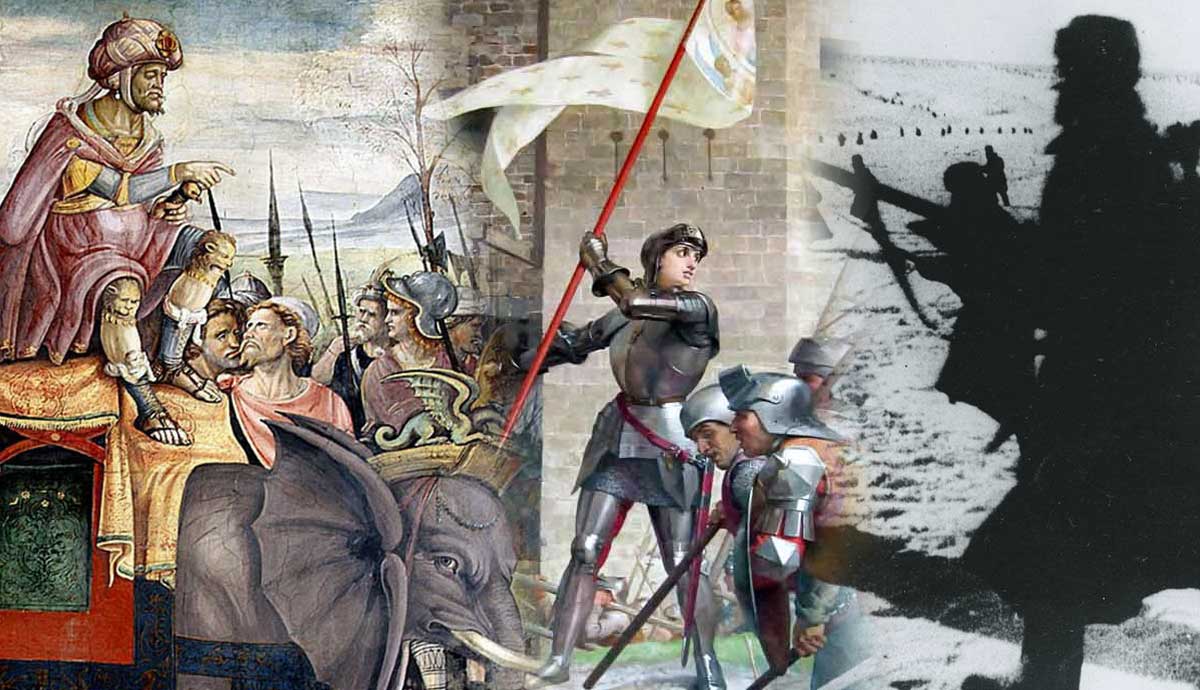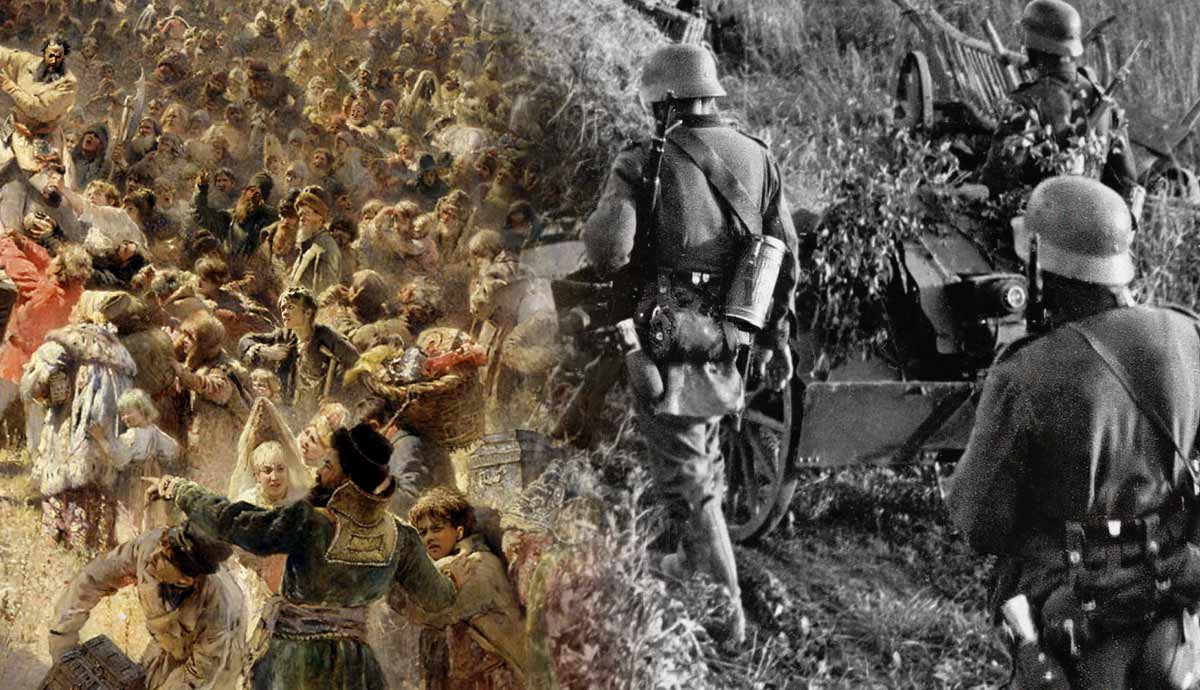
Although the world has often seen brutal conflict throughout its history, it has also managed to avoid its fair share of devastation. From the Imperial Age to the Cold War, misunderstandings and accidents have nearly led to wars that would have created a radically altered society to the one we see today.
Beginning with the Pax Britannica and concluding with a conflict that even simmers to this day, this list will examine the build-up, climax, and resolution of 7 key standoffs between world powers. Often, it was the actions of a few fortunately placed individuals who prevented further escalations in conflict. Although some of these potential wars were mostly an exchange of jingoistic rhetoric, they often mimicked the initial stages of many of the world’s most notorious conflicts.
1. The Attempted Assassination of Napoleon III: Britain vs. France

Following the Napoleonic Wars, the 19th Century was considered a time of peace between European powers, labeled the Pax Britannica. However, there were a number of flashpoints that could have escalated into a broader conflict had cooler heads not prevailed. The first incident came in 1858 when a group of Italian nationalists, supported by a number of radicals in England, attempted to assassinate French Emperor Napoleon III.
The nationalists saw Napoleon as the primary threat to the unification of Italy due to France’s dominance within the region. At the time, Britain did not attempt to control immigration into the country, so it was easy for the plot’s ringleader, Felice Orsini, to arrive in Britain to receive training and supplies, including lessons in bomb-making. From there, it was easy to be smuggled into France to carry out their assassination attempt.
On January 14, 1858, Orsini and other plotters threw three bombs at the carriage of Napoleon and his wife, Empress Eugenie, targeting the drivers and underside of the carriage. Eight guards and one horse were killed in the blast, with up to 150 people wounded. To Orsini’s dismay, those inside the carriage were protected, and he was forced to flee the scene after being wounded. He was found by police the next day and sentenced to death, along with another conspirator.

Despite being a failure, this incident had wider ramifications for international politics. The French were incredibly aggravated when they discovered that those in Britain who had helped and armed the plotters would escape punishment by the government. 1858 saw a drastic increase in military planning for war as both imperial powers mobilized their armies and fleets in preparation for a potential conflict. The months following the plot saw a marked intensification of rhetoric on both sides as jingoism (extreme, warlike patriotism) reigned supreme across both sides of the English Channel, radicals using growing tensions to further their political agendas.
Fortunately, this anger soon dissipated as attentions were drawn elsewhere. For Britain, the fall of the Palmerston government drew the focus of the political class for the rest of the year. In France, the Second Italian War for Independence drew Napoleon’s forces away, eliminating the preparation for war with Britain. For those few early months of 1858, however, the two imperial powers came dangerously close to reigniting their centuries-old rivalry.
2. The Trent Affair: United States vs. Britain

The American Civil War was filled with potential escalations, primarily with the threat of interference from foreign powers. The earliest test for intervention came early in the war. On November 8, 1861, RMS Trent was captured by the Union Navy. On board were two Confederate envoys headed to Europe to negotiate for recognition by Britain and France. Both were seized by Union officials and brought back to be detained.
When the British government heard of the news, it immediately sparked outrage across the country. Officials demanded an immediate apology and the release of the captured prisoners. Concrete steps were also taken as forces in Canada at Britain’s Atlantic colonies were strengthened to prepare for war, as the government leaned towards the idea of interventionism on behalf of the Confederacy.
Thankfully, the negotiation skills of Lincoln and his diplomats helped resolve the issue. The prisoners were released in early 1862, but no formal apology was issued. Through tactful diplomatic work, the Union prevented the growing risk of escalation and potential intervention from European powers, which would spell disaster for the United States.
3. The Fashoda Incident: France vs. Britain

The peak of the Scramble for Africa would inevitably reignite imperial rivalries as European powers once again found new avenues for competition. Although this would eventually result in the First World War, the turn of the 19th century saw a number of flashpoints.
One such event came in 1898. Britain’s conquest of Sudan was reaching its final stages, and forces led by Horatio Kitchener were enthused after a crushing victory at Omdurman. A French expedition from West Africa sought to cut off this southward expansion. Both forces met at the village of Fashoda, now Kodok in north-eastern Sudan, and claimed their right to the land. Exchanges between troops were friendly, as leaders agreed to await orders from their respective governments.
Back home, it was a different story. Francophobia and Anglophobia peaked as politicians traded insults and demands. The Royal Navy mobilized its reserves and prepared for further escalations. Unbeknownst to the forces within Fashoda itself, both governments prepared for a potential conflict over colonial possessions.
Eventually, France was forced to back down due to problems domestically and on the ground. The Dreyfus Affair meant that French politicians were unable to formulate a coherent response as they were too busy attacking each other. The French expeditionary force in Sudan was also heavily outnumbered by the British and so unable to stake a claim without direct orders from Paris. The French quickly withdrew, and Britain was able to cement its grip over the rest of Sudanese territory.
4. Cold War Missile Scares: US vs. USSR

The most significant “potential” conflict on this list, the Cold War came dangerously close to unleashing devastation for all humanity. A number of high-risk incidents took place across the standoff between the Soviet Union and the United States, but three in particular stick out as nearly triggering nuclear war.
The first came during the Suez Crisis of 1956. The Crisis was one of the few instances of Cold War cooperation, as US and USSR told Britain and France to stand down from their invasion of Egypt’s Suez Canal. However, documents released decades later show the situation to be much more tense than previously thought. The American North American Aerospace Defense Command (NORAD) received reports that Soviet Fighters had scrambled close to the conflict. With the Soviets having previously threatened to use conventional weapons to stop the British and French invasion, plans were drawn up in case a nuclear response from NATO was necessary. It turned out that these NORAD reports were false, and American forces were stood down.
Once nuclear technology had developed even further, the threat of danger became even greater. The most famous incident came in 1962, with the Cuban Missile Crisis. The first was on October 25. A faulty alarm at an airbase in Wisconsin scrambled US interceptors. No mention of the warning being a drill meant that pilots thought they were at war. In an almost cinematic scene, an officer had to drive onto the runway to physically block the planes from taking off once the false alarm had been discovered. A bear climbing the fence was discovered as the culprit.

Nuclear disaster came even closer a couple of days later. Soviet submarine B-59 lost contact with Moscow after constant harassment by American destroyers. Noticing dropped depth charges, the Soviet commander called for a nuclear strike against the US fleet, fearing war had broken out. The political commissar on board agreed. It was only the intervention of Vasily Arkhipov, the second in command of the submarine, which prevented a missile launch. Needing all three on board to agree to deploy nuclear weapons, Arkhipov eventually persuaded the captain to surface and wait for orders from Moscow.
False alarms reared their head once again towards the end of détente. Computer errors at multiple NORAD bases relayed to National Security Advisor Zbigniew Brzezinski that 2,200 Soviet missiles had been launched as part of a full-scale attack. President Jimmy Carter had up to seven minutes to decide whether or not to launch a retaliatory strike. Luckily, satellites discovered the false alarms within a few minutes, and disaster was averted.

The final and most significant Cold War scare came close to the collapse of the Soviet Union. While the Cuban Missile Crisis is often highlighted as the moment of greatest danger post-1945, recent document releases indicate that November 1983 nearly triggered a nuclear war. Able Archer 83 was a NATO exercise set to run from November 7-11, 1983, which transitioned from a simulated Soviet invasion to envisioning a NATO nuclear response. Unaware of the exercise, Soviet High Command intercepted transmissions of the exercise. Coupled with previous false alarms in September of that year, Soviet generals feared an imminent attack and ordered the USSR’s nuclear capability to be prepared. It was only when the exercise ended and a message was passed to the Politburo by a double agent that Soviet nuclear capability stood down.
Although a number of close calls, often saved by timely intervention, nearly brought the world to a nuclear conflict throughout the Cold War, historical consensus views Able Archer 83 as the closest the Cold War came to an actual confrontation between the USA and USSR.
5. Sino-Soviet War: China vs. USSR

International tensions from the Cold War nearly triggered a separate conflict. This time, it was between the People’s Republic of China and the Soviet Union. In 1964, China began challenging established borders with its communist partner in the north. Beijing saw this border as a vestige of imperialist unfairness and believed the USSR would be willing to negotiate. When this didn’t materialize, the People’s Liberation Army attacked Soviet soldiers on the border in March 1969. The clashes would slowly escalate to the extent of both sides mobilizing for a potential war.
A ceasefire led to the original borders being recognized and both militaries standing down. The problem remained an issue within China and began the split between the Soviet Union and China, the latter beginning to seek closer relations with the United States right as the clashes began.
6. James Blunt in Kosovo: NATO vs. Russian Federation

Although the Cold War ended with the collapse of the Soviet Union in 1991, tensions would still remain between Russia and the West. This close call even included a celebrity appearance, with pop star James Blunt in the midst of the brewing conflict.
Amid the Kosovo War, Blunt, a British army captain at the time, was serving with NATO forces sent as peacekeepers into the region. Feeling that they were being excluded from the international effort to end the conflict, the newly formed Russian Federation ordered troops to take the airfield at Pristina. The move would secure a vital supply line in the region and bolster Russia’s influence in negotiations. A stand-off ensued between NATO soldiers and the isolated Russian troops, with Blunt as one of the most senior figures on the scene.
Sensing the opportunity to strike a significant blow against the Russians, US General Wesley Clark ordered Blunt to destroy the Russian forces and seize the airfield. Blunt refused the order, willing to risk court-martial for not advancing. He was luckily reinforced by British General Mike Jackson, who was quoted as saying he would not “start the Third World War for you.”
The forces remained at a stand-off as diplomats back home negotiated. Eventually, a compromise was reached, and the duty of peacekeeping in Kosovo was divided between the East and West. Although no fire was exchanged, it was the closest the two post-Cold War forces came to directly clashing. Only the refusal of two key figures prevented a potential escalation.
7. Crisis over Kashmir: India vs. Pakistan

Historical tensions between the two countries flared after a terrorist attack on the Indian Parliament in December 2001. The Indian government accused Pakistan of supporting the terrorists and attempted to mobilize half a million troops to the border. It wasn’t quick enough to maintain the element of surprise, so Pakistan could bring its own force of 300,000. A military deadlock followed throughout 2002, interrupted only by random artillery duels across the mountains of Kashmir.
On the home fronts, inflammatory rhetoric from politicians, like those of Pakistani President Pervez Musharraf, and sporadic terrorist attacks prevented a de-escalation of tensions. By June 2002, both sides were fully mobilized. Small clashes caused thousands to evacuate the border regions, with India and Pakistan examining their nuclear capability to prepare for a strike.
By October, the stand-off had lost its zeal, both forces began demobilizing the border, and a ceasefire was agreed to in 2003. This potential conflict was the most violent “non-war” on the list but was included as it did not progress into a full-scale conflict, as many of the random skirmishes had the potential to do so. Cost may have been the greatest inhibitor to conflict, totaling $4 billion for India and $1.5 billion for Pakistan.










